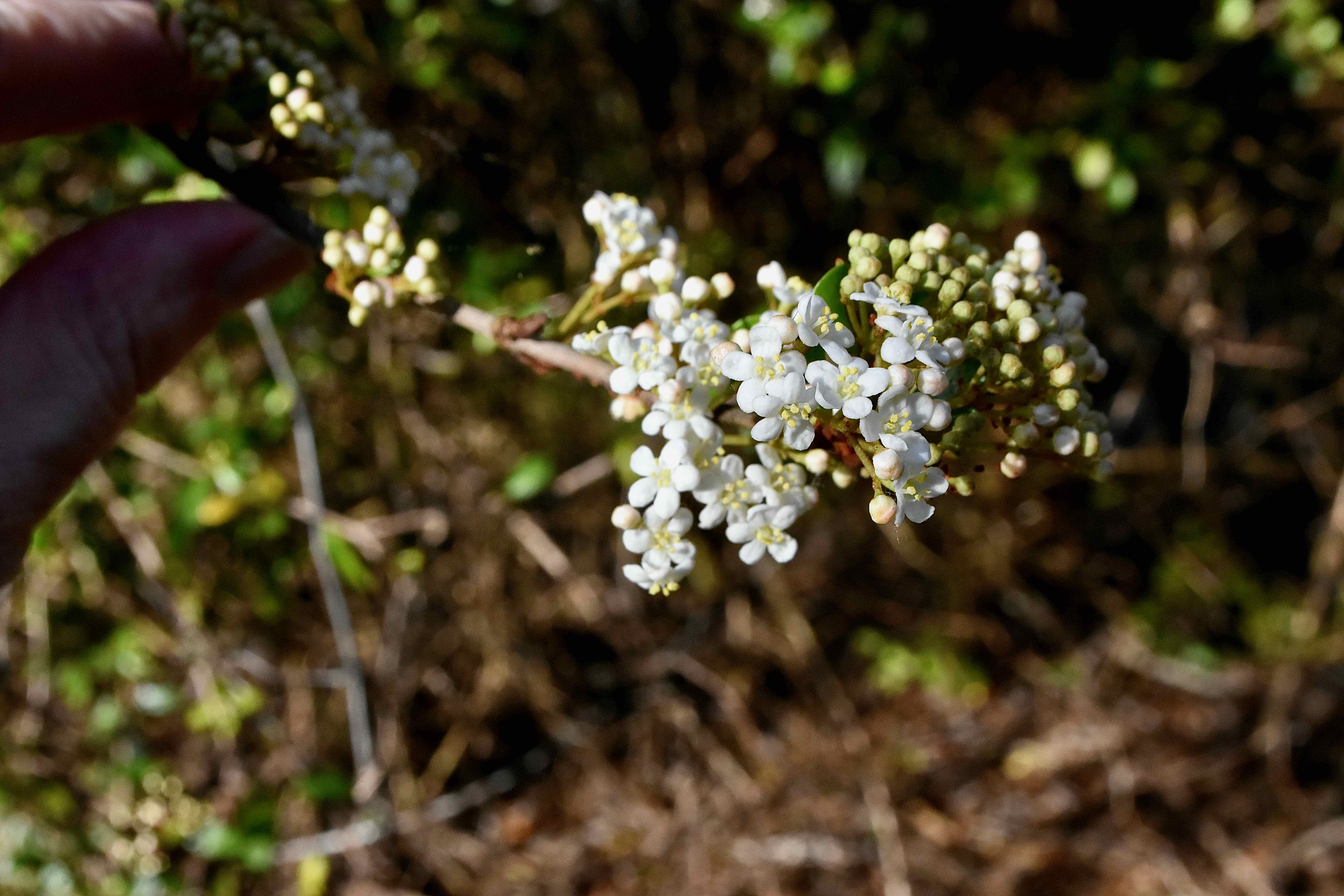
Walter's viburnum, photographed at Loxahatchee National Wildlife Refuge, Boynton Beach, Palm Beach County, in February 2022.
Few plants in the wilds of South Florida can match Walter’s viburnum for beauty and utility. Its springtime masses of blooms are absolute magnets for pollinators; the fruit that follows in late summer and fall provide food for birds and small mammals. And its dense tangles make good cover for critters throughout the year.
And it’s easy on our eyes, making Walter’s viburnum attractive as a landscaping plant.
Walter’s viburnum, aka Viburnum obovatum, is a Florida native found throughout most parts of the state. It is, however, rare enough in South Florida that the Institute for Regional Conservation considers it imperiled within the region.
Some botanical basics: It is a shrub but can grow into a small tree. It typically stands between 10 and 15 feet tall, with an equal spread. According to the U.S. Department of Agriculture’s PLANTS database, a 20-year-old Walter’s viburnum theoretically can hit 30 feet tall, but mostly it’ll top out at maybe 18 to 20 feet here in South Florida.
Its range extends along the Atlantic and Gulf coastal plains as far north as South Carolina, through Georgia, Florida and into one county in Alabama. Its range within South Florida includes Broward, Lee, Collier and mainland Monroe counties.
Walter’s viburnum is what’s known as tardily deciduous. Instead of dropping its leaves in the fall as most decidous trees and shrubs do, it does so in late winter and early spring, leafing out shortly afterwards. The effect is more pronounced farther north in the plant’s range, less so as you go south to the point where it becomes evergreen or near evergreen in our region.
And speaking of leaves, they are dark green, leathery to the touch and arranged alternately along the stem. They are small, about an inch long, oval to spatulate (like a spatula) in shape. We’ve them also described as wedge-shaped. The edges are generally smooth — entire in botany speak — or slightly toothed.
In late winter or early spring, Walter’s viburnum sends masses of small, white flowers, individually on the plain side but collectively fairly spectacular. It becomes so white it almost looks like it's been struck by a blizzard. They’re attractive to pollinators, including a wide range of butterflies, plus scarab beetles. Small red fruit, called drupes, follow on, turning black as they ripen in summer and fall. Birds and other small animals munch on them. The fruit also provides visual interest for us humans.
It spreads via rhizomes, or underground stems, forming dense thickets that provide shelter for nesting birds. More on the rhizomes in a bit.
Favored habitats for Walter’s viburnum include places that are on the damp side, including the edges of swamps, flatwoods, hydric (wet) hammocks and riverine forests.
Its good looks and adaptability make Walter’s viburnum popular as landscape plant. It’s also hurricane resistant, an important feature in a region regularly savaged by tropical storms.
It can be used to form a dense hedge — those rhizomes doing their thing — or trained as a single or multi-trunk tree.
We should mention that the Walter of Walter’s viburnum is Thomas Walter, an 18th century Englishman who moved to South Carolina, became a planter and naturalist. Walter was the first to botantically described the plant and gave it its scientific name.
Other common names include small-leaf viburnum and small-leaf arrow-wood. It’s a member of Adoxaceae, the viburnum family. Previously, Walter’s viburnum was listed as a member of Caprifoliaceae, the honeysuckle family. Some sources, including the Ladybird Johnson Wildflower Center still includes it in Caprifoliaceae.


